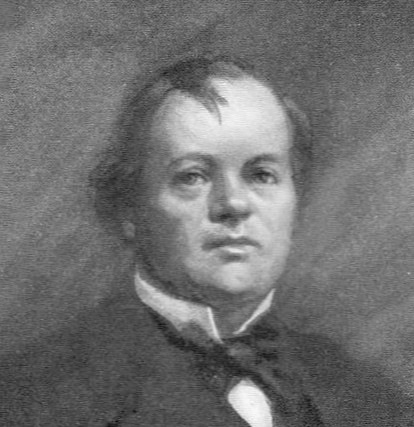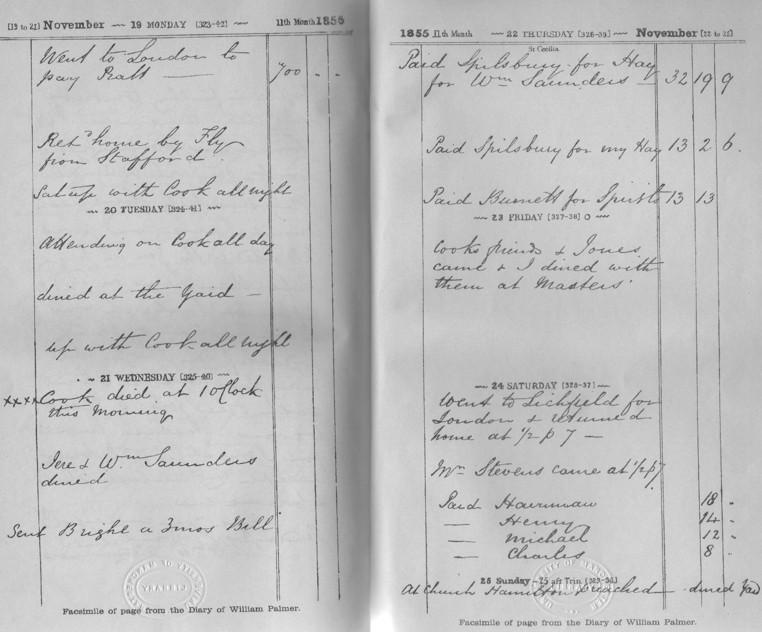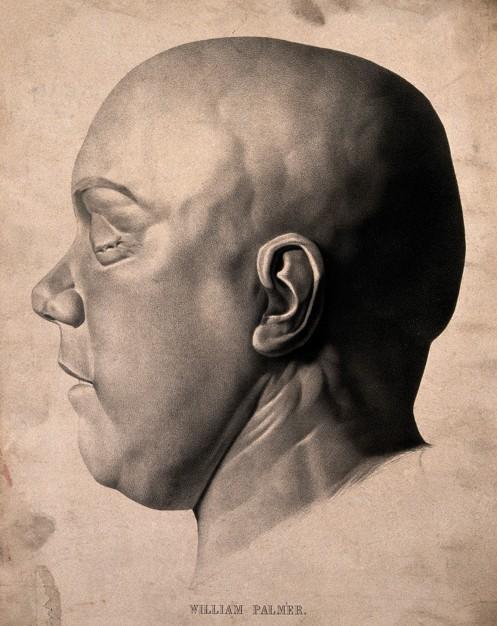
1824 - 1856
William Palmer
Summary
Name:
Nickname:
Rugeley Poisoner / Prince of PoisonersYears Active:
1855Birth:
August 06, 1824Status:
ExecutedClass:
MurdererVictims:
13+Method:
PoisoningDeath:
June 14, 1856Nationality:
United Kingdom
1824 - 1856
William Palmer
Summary: Murderer
Name:
William PalmerNickname:
Rugeley Poisoner / Prince of PoisonersStatus:
ExecutedVictims:
13+Method:
PoisoningNationality:
United KingdomBirth:
August 06, 1824Death:
June 14, 1856Years Active:
1855bio
William Palmer was born on August 6, 1824, in Rugeley, Staffordshire, England. He was the sixth of eight children born to Sarah and Joseph Palmer. His father worked as a sawyer and passed away when William was just 12 years old. After his father's death, his mother, Sarah, inherited a significant amount of money, which was about £70,000.
At the age of 17, William began an apprenticeship at a chemist in Liverpool. However, he was dismissed after three months due to allegations that he had stolen money. Despite this setback, he pursued studies in medicine in London and qualified as a physician in August 1846. Later that year, he returned to Staffordshire to practice medicine.
In 1847, Palmer married Ann Thornton at St. Nicholas Church in Abbots Bromley. Ann was born in 1827 and had a mother who was known to have had a relationship with a Colonel Brookes. His mother-in-law, also named Ann Thornton, had inherited £8,000 after Colonel Brookes’s death, but she died in January 1849 after visiting Palmer. Despite expecting a larger inheritance from her death, Palmer was disappointed.
William Palmer developed an interest in horse racing and borrowed £600 from a man named Leonard Bladen, whom he met at the races. This loan led to trouble, as Bladen died in Palmer's home on May 10, 1850, under unclear circumstances. Palmer's wife noted that Bladen had little money on him at the time of his death, despite recently winning a large amount from horse betting.
The Palmers had five children, but tragically, four of them died in infancy, with their deaths attributed to "convulsions." The first of these, Elizabeth, died at about two and a half months old in January 1851. She was followed by Henry, who lived for about a month; Frank, who died just hours after birth; and John, who passed away when just three or four days old.
As time went on, Palmer found himself in significant debt. He began forging his mother's signature to pay off his creditors. In September 1854, his wife Ann died from what was believed to be cholera during a widespread pandemic. Palmer had taken out insurance on her life that would pay a large sum upon her death.
By 1855, Palmer was deep in financial trouble and even tried to take out insurance on his brother Walter. Walter had become dependent on Palmer for alcohol, consuming large amounts of gin and brandy. Walter died in August 1855, shortly after Palmer took out a sizable life insurance policy on him.
murder story
William Palmer was a doctor who committed several murders for financial gain. His most well-known victim was his friend, John Cook. In November 1855, Cook won a large sum of money while betting on horses, which brought him and Palmer together for celebrations. However, during this time, Cook became ill. He believed Palmer was trying to poison him and told his friends he suspected Palmer was "dosing" him.
Palmer took advantage of Cook's illness. He provided Cook with a bottle of gin, which had been in his possession. The gin made Cook extremely sick, and his condition worsened over the next few days. Shortly after, Palmer purchased strychnine, a deadly poison, which he mixed into pills that he gave to Cook. Cook died on November 21, 1855, in great pain.

Following Cook's death, Palmer acted quickly to cover up his actions. He obtained a death certificate claiming Cook died of natural causes and attempted to convince others that he was innocent. However, suspicion grew, and an inquest was held. The jury concluded that Cook had been poisoned by Palmer.
Palmer was arrested and charged with murder and forgery. His trial moved to the Old Bailey in London to ensure a fair jury, as many locals in Staffordshire were biased in his favor. The prosecution presented strong evidence to suggest Palmer had poisoned Cook for financial reasons, alongside previous suspicious deaths including those of his wife and brother.

Despite Palmer's defense claiming that there was no direct evidence of poisoning, the jury found him guilty within an hour. The judge sentenced him to death. Palmer was executed by hanging on June 14, 1856. His execution drew a crowd of around 30,000 people. After his death, Palmer's body was buried in quicklime at Stafford prison.